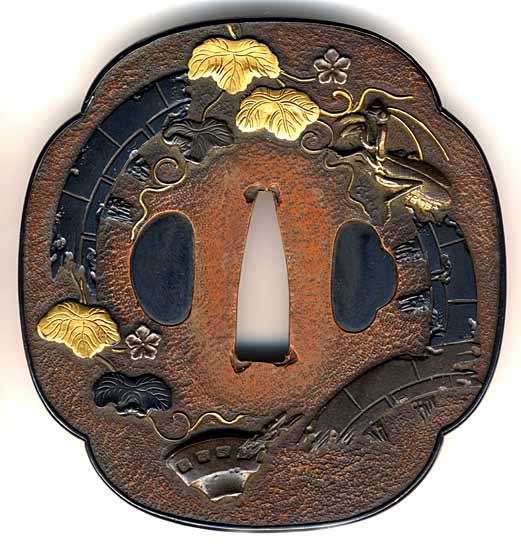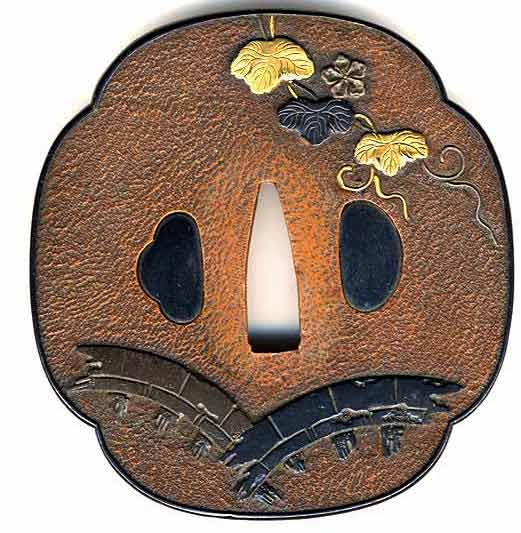Shonai Shoami 所内正阿彌 School tsuba (c. 1750 - 1800)Robert Haynes describes this as a classic example of kinko Shonai Shoami (所内正阿彌) School work. Shonai is a province in the northernmost part of the main island of Japan. The relative isolation from the rest of Japan, at that time, allowed for a more reflective and elegant style to to evolve, this being a fine example. This branch of the Shoami family school was founded by Shoami Matahachiro, as a retainer of the Sakai family, in Kambun 4 (1644). The plate of this tsuba is yamagane (copper), with an ishime finish (numerous small punch/hammer marks). The dull red color of this tsuba is indicative of the works done in yamagane by this school. The raised inlay is in gold, shakudo (copper/gold alloy), silver and shibuichi (copper/silver alloy). This use of various metals is called iroe, literally "painting with metals". The mantis has gold applied in the style that appears to be nunome. Nunome is a technique to apply very thin sheets of soft metal to a base metal that has been incised with very fine chisel marks. Many very fine crosshatches are cut into the base metal, with a thin sheet of foil applied over it and rubbed into the surface. Its use here seems to be to achieve the effect of cells in the wings of this praying mantis. The mimi (rim) is is covered with a shakudo fukarin (rim cover) in the rozuke style. The two ana (openings) have been plugged with shakudo inserts.
This common subject
depicts a praying mantis on broken cart wheels with flowering vines,
all in very fine detail. |

